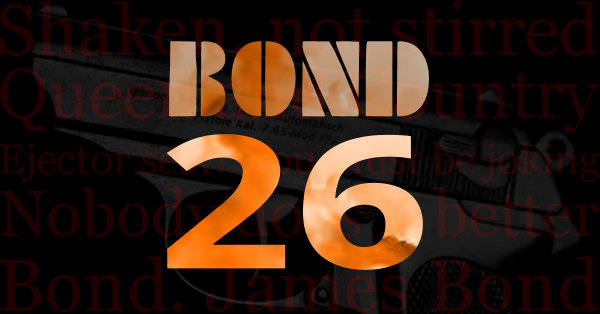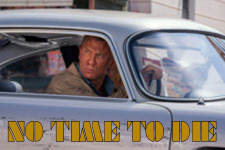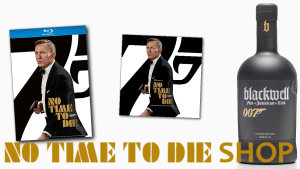It was with great sadness that we received the news of John Barry’s death at the end of January at the age of 77. Barry’s involvement with the Bond series started with his arrangement of the James Bond Theme by Monty Norman and his iconic sound provided the early films with one of their key elements. Although it was never a realistic possibility, many fans had been hoping for one last Barry-scored soundtrack, whose last contribution to the series was The Living Daylights in 1987. In this article professional musician Tim Mottershead takes an in-depth look at John Barry’s contribution to the series.
From the outset of the film series, music played a pivotal role in defining the atmosphere of danger, elegance, and sophistication. The music for the first film Dr No was by Monty Norman, who, running short of time and ideas, adapted the song Bad Sign Good Sign he had previously written for the Trinidad located play A House For Mr Biswas based on the novel by V.S. Naipaul.
This arrangement was the James Bond Theme and is pretty much the only music to feature in the film, apart from two songs which arise directly from the screen action (Three Blind Mice and Underneath the Mango Tree)
Arranged by John Barry and recorded with his jazz group ‘The John Barry Seven’ with orchestration by Burt Rhodes – the precise parts played by Norman and Barry are detailed in Norman’s successful libel case against The Sunday Times in 2001 – one of the arrangement’s defining characteristics was the twangy electric guitar sound; while many assumed that it was Hank Marvin, the guitarist was, in fact, Barry’s band member Vic Flick.
Barry went on to compose the music for 11 further Bond films, starting with From Russia With Love. In recent times other composers have taken up the pen, but Barry remains the benchmark by which the others are judged, in much the same way as subsequent Bond performances are measured against that of Sean Connery.
While the title song in From Russia With Love was composed by Lionel Bart, whose musical Oliver was proving a massive stage triumph, it does not appear in full until the closing credits. However, in the pre-title sequence we witness Bond ‘killed’ (the first of several instances in the series) in what turns out to be a rehearsal for an elaborate assassination plot by SPECTRE – in place of the song comes John Barry’s exciting orchestral rendition.
This film is the first to feature Bond’s ‘alternative theme’ (titled ‘007’ and deploying a Latin American 3+3+2 rhythm), heard during the fight at the gypsy camp. It is worth mentioning that all the music most closely associated with Bond has a distinctly jazzy feel, despite the oft-made claim that he is quintessentially British.
Perhaps the producers were now convinced that Barry had passed the audition, or that it simply made sense for the same composer to be allowed to write both song and score. For whatever reason from the third film of the series onwards, Goldfinger, Barry became responsible for the music in its entirety.
He thus penned distinctive songs and scores for the remainder of Connery’s tenure as Bond: two memorable vehicles for Shirley Bassey with Goldfinger and Diamonds are Forever; the gutsy Thunderball with highly effective music to accompany the extensive underwater scenes; the haunting You Only Live Twice, the evocative score of which seems to suit the Japanese location perfectly; and On Her Majesty’s Secret Service. As this film is widely regarded as his finest contribution to the series I shall consider it in another article in more detail.
By now an established composer and songwriter, he contributed successful scores to many other diverse and high profile films, which up to this time included: Zulu; The Ipcress File; Born Free; The Quiller Memorandum; The Lion in Winter; and Midnight Cowboy.
But whilst Barry was involved with every film from the Connery era, he was only involved in four of Roger Moore’s seven films. Although older than Connery by nearly three years, and at nearly 45, already approaching the statutory retirement age for a 00 agent according to Ian Fleming in Moonraker, the producers sought to portray a youthful, modern look.
Out went the trilby and the Aston Martin and in came longer hair, wider lapels, kipper ties, and flares. There was also a much lighter touch with the greater emphasis on tongue in cheek one-liners already started in Diamonds Are Forever; out too went John Barry.
Despite the fact that near the start of Goldfinger Bond observes that drinking champagne at the wrong temperature or listening to Beatles records without earmuffs just aren’t done, that didn’t stop the producers from asking former Beatle, Paul McCartney, to write and perform the title song Live and Let Die.
The score was by stalwart Beatle’s producer and collaborator George Martin. Unfortunately Barry was also absent for Moore’s two finest films; in Moore’s own opinion this was The Spy Who Loved Me (1977) and in the opinion of the critics and many fans For Your Eyes Only (1981). With a plot closely based on two of Fleming’s short stories – For Your Eyes Only and Risico – the film was originally envisaged as vehicle for the more seriously minded Timothy Dalton, though Roger Moore (persuaded to stay on) adapts his portrayal admirably to suit its gritty realism.
The producers also acknowledged they had strayed too far into sci-fi in the previous film Moonraker, for which Barry did provide score and song: Johnny Mathis, Kate Bush and Frank Sinatra have all been mentioned as possible vocalists under consideration, though in the end Shirley Bassey returned to the fold for the third and final time.
Barry also produced scores and songs for the Moore vehicles The Man with the Golden Gun, memorably sung by Lulu, and Octopussy. For Moore’s final outing as Bond, A View to a Kill, Barry teamed up with the pop group Duran Duran, a decision which paid dividends in adding a new edge to Barry’s by now familiar Bond sound.
A similar collaboration was tried with the following film, The Living Daylights, which featured Timothy Dalton’s superb debut as Bond. This was less successful, perhaps due to the different work ethics of Barry and the band, this time the Norwegian group A-ha! With this, after twelve films, John Barry bowed out from the James Bond film series, although the title song of Dalton’s next film, Licence to Kill, featured a sizeable quote from Goldfinger.
A six-year hiatus followed, by which time the long sought Pierce Brosnan was on board in Goldeneye, to an Éric Serra soundtrack. However, Barry was still able to influence the music of future James Bond films when he contacted Barbara Broccoli to recommend a young composer for Brosnan’s second outing as 007, Tomorrow Never Dies.
A fan of James Bond and John Barry since childhood, David Arnold had been brought to Barry’s attention when he produced Shaken and Stirred: The David Arnold James Bond Project featuring a variety of contemporary artists, stating “he was very faithful to the melodic and harmonic content, but he’s added a whole other rhythmic freshness and some interesting casting in terms of the artists chosen to do the songs. I think it’s a terrific album. I’m very flattered”. Arnold has scored every Bond film since.
Barry continued to remain active as a film composer outside of the Bond series, producing a large body of cinema of which the following are merely the better known: Mary, Queen of Scots; The Tamarind Seed; The Dove; Robin and Marian; The Deep; Somewhere in Time; Out of Africa; Dances with Wolves; and Chaplin. Notable TV themes included The Persuaders! (also starring a pre-Bond Roger Moore) and The Adventurer, both from the early 1970s.
In conclusion it is difficult to summarize the major contribution the John Barry made to the James Bond franchise, which only represented part of his career. Perhaps his legacy to the series is his creation of its first distinctive and memorable scores, almost creating an ‘in-house style’ which has proved difficult to emulate or match convincingly.









